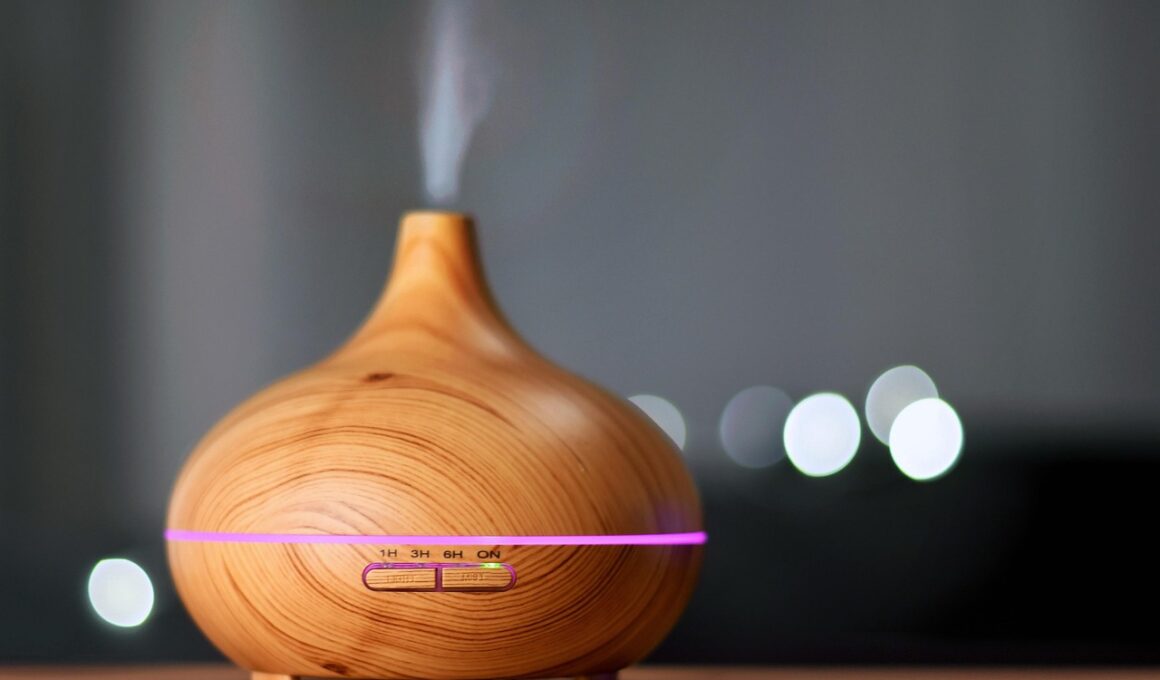Using Pheromone Diffusers to Soothe Phobic Cats
Feline phobias can significantly affect a cat’s quality of life. Many cats exhibit signs of fear in different situations, from loud noises to unfamiliar visitors. One effective method for addressing these fears is through the use of pheromone diffusers. These diffusers release synthetic pheromones that mimic the calming scents produced by cats, which can help alleviate anxiety in stressful situations. For many pet owners, this solution can seem like magic as they witness their cats becoming more relaxed. However, it is essential to understand that each cat is unique, and the efficacy of pheromone diffusers can vary. Monitoring your cat’s behavior can help you determine if the diffuser is making a difference. If a pheromone diffuser does not seem to provide enough relief, consider combining it with behavioral training or consulting a veterinarian. Adopting a holistic approach can yield the best results in managing phobias. Additionally, ensuring your home is a safe haven for your cat can complement pheromone therapy, enhancing their overall mental health.
Understanding feline phobias requires insight into common triggers. These triggers can encompass many stimuli, including loud noises, other animals, or even specific environments. Identifying the cause of your cat’s fears is the first step in addressing and mitigating these issues. For instance, if your cat is afraid of thunderstorms, a pheromone diffuser may help, along with creating a safe, quiet space for them during the storm. Equally important is to establish a consistent routine in your household to provide security for your cat. Gradually exposing them to their fears, always under supervision, can also help them adapt. Although gradual exposure might seem daunting, it can be very beneficial. Each small win can encourage confidence, allowing your cat to face their fears over time. In addition, ensuring that your cat has stimulating toys can keep them preoccupied and lessen feelings of anxiety. Regain control by managing their surroundings, structure, and support while using pheromones. This multifaceted approach can create a calmer environment where your cat can thrive.
The Role of Pheromones in Feline Behavior
Understanding how pheromones work is vital when considering their use for calming phobic cats. Pheromones are chemical signals that animals use to communicate their emotional state to one another. In cats, these signals can evoke feelings of comfort, safety, and calm. Synthetic versions of these pheromones are often available in diffusers, sprays, and even collars. When a phobic cat inhales these pheromones, it can lead to a sense of reassurance, helping curb anxious behaviors like hiding, hissing, or aggressive actions. Scientific studies indicate that these pheromones can indeed reduce stress and create a more serene state of mind. Utilizing these products creates a stress-reducing environment, which is particularly beneficial for rescue cats or those with traumatic past experiences. A pheromone diffuser should be placed in areas where your cat spends significant time, such as their favorite resting spot. The calming effects may lead to reduced feline anxiety, paving the way for a more harmonious household. This dedicated approach helps enhance a cat’s well-being, making life easier for both pets and their owners.
While pheromone diffusers are a popular choice, they are not a standalone solution. Owners must consider integrating other behavioral practices, seeking a comprehensive approach for maximum effectiveness. For instance, ensuring that your cat’s environment is free from loud noises or any distressing stimuli is important. Basic training can also help provided adequate confidence-building. Positive reinforcement techniques are particularly effective. Rewarding your cat for facing fears with treats or affection encourages bravery. Creating an interactive play routine can also ease anxiety significantly. Additionally, consult your veterinarian to address any underlying health issues that could exacerbate anxiety through fear responses. A full assessment can clarify whether specific behavioral therapies or additional medications may benefit your pet. Certain medically prescribed treatments can complement pheromones, leading to improved outcomes for anxious felines. Owners are encouraged to proactively monitor their cat for signs of stress and keep notes on behavioral changes. This detailed approach can provide valuable insight to both veterinary professionals and owners developing tailored anxiety management plans.
Choosing the Right Pheromone Product
When selecting a pheromone product for your cat, it’s essential to choose wisely, as many options are available. Look for reputable brands known for their quality and effectiveness in feline pheromone diffusion. Read reviews from other cat owners to gauge success rates and recommendations. Some products are designed for use in specific situations, while others can be used continuously. Moreover, consider the size of the area you wish to treat; larger spaces may require multiple diffusers to be effective or a heavy-duty version. The convenience of sprays, for instance, may appeal to some owners due to their immediate application, although diffusers are ideal for long-term coverage. Each feline’s reaction to the product can vary, and sometimes it may take a few tries to find the perfect fit for your cat. If you notice no improvement within a month, it may be time to try a different product within the same category. Always consult your veterinarian when in doubt or needing recommendations specific to your cat’s anxiety needs.
Consistency with pheromone use can lead to better outcomes for phobic cats. It is essential to establish a routine that includes regular refills or replacements for your chosen pheromone diffusers. Cats thrive on predictability, and maintaining an ongoing source of pheromones reinforces a sense of safety. Many cat owners make the mistake of using these products sporadically, which can lessen their beneficial effects over time. Additionally, remember that while pheromones can significantly decrease anxiety, they are not a cure-all. Portending emotional improvement may take weeks, depending on the individual cat. Restart your workflow by maintaining patience and adjusting your approaches as necessary. Observing your cat’s responses is vital. Gradually increasing exposure to previously feared stimuli allows the overall process to be smooth. Continue implementing changes to your cat’s environment, too, as this can reinforce the calming benefits of the pheromones. For many cats, the best results happen in a tailored and adaptable manner, not merely from having a diffuser plugged in. Develop a cohesive plan with consistent attention to care for your feline friend.
Conclusion: The Path to Calming Your Cat
By understanding and implementing pheromone diffusers, cat owners can significantly improve their pet’s mental health. Combining pheromone therapy with behavioral enrichment creates an environment that fosters emotional well-being, thereby reducing anxiety and phobias. As owners, being attentive to triggers and responsive to their feline companions’ needs is crucial. Engaging in gradual desensitization together can also lead to bonding, strengthening trust between cat and owner. An effective approach may involve sharing responsibilities, reinforcing positive behaviors, and establishing a comforting routine. Importantly, remain open to flexibility in your methods, adapting to your cat’s changing reactions. Seek veterinary guidance if certain behaviors persist despite your efforts. Sometimes, a more extensive treatment plan, including medications or other therapies, may be warranted. Committing to a holistic strategy regarding feline mental health ensures the best chances of success. Over time, with proper engagement with pheromones and friendly interaction, many cats can overcome their deep-rooted phobias. Witnessing your cat transform into a confident, calm companion is an incredibly rewarding journey.


